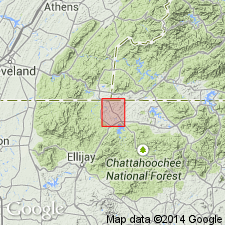
- Usage in publication:
-
- Copperhill formation
- Modifications:
-
- Named
- Dominant lithology:
-
- Metagraywacke
- Schist
- Metaconglomerate
- Quartzite
- Meta-arkose
- AAPG geologic province:
-
- Piedmont-Blue Ridge province
Summary:
Named as lowermost formation of Great Smoky group in this area. Named for town of Copperhill, southeastern TN. Underlies all of northwest corner of Mineral Bluff quad, including southeastern TN, southwestern NC, and northernmost GA. Eastern boundary of formation passes through Franklin Mountain, just east of mouth of Hothouse Creek, and just east of Stewart Knob. Consists of mostly metagraywacke with smaller proportions of mica schist, metaconglomerate, quartzite, and meta-arkose. Metagraywacke and mica schist are interbedded throughout formation. Thickness is estimated at between 2000 and 5000 ft, but accurate measurements are hampered by sparse outcrops and structural complexity. Along boundary, metagraywacke and mica schist of Copperhill are interbedded with staurolite-mica schist and metaquartz conglomerate of overlying Hughes Gap formation. Transition zone is a few hundred feet thick. Report includes geologic map and correlation chart, as well as extensive mineral analyses of Copperhill. Age is Precambrian.
Source: GNU records (USGS DDS-6; Reston GNULEX).
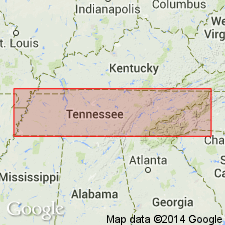
- Usage in publication:
-
- Copperhill Formation
- Modifications:
-
- Overview
- AAPG geologic province:
-
- Appalachian basin
Summary:
Near Ducktown, TN, Copperhill Formation is mapped with Hughes Gap, Hothouse, and Dean Formations as Great Smoky Group, undivided. Age is Precambrian.
Source: GNU records (USGS DDS-6; Reston GNULEX).
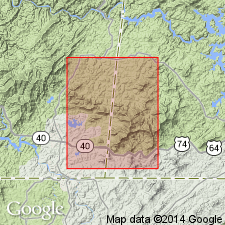
- Usage in publication:
-
- Copperhill Formation*
- Modifications:
-
- Revised
- AAPG geologic province:
-
- Piedmont-Blue Ridge province
Summary:
Schist previously assigned to Copperhill Formation as a transition zone into Hughes Gap Formation in Mineral Bluff quad, GA, by Hurst (1955) is now assigned to Wehutty Formation (new). Contact with Copperhill is placed where there is a lithologic change from metasandstone of Copperhill to schist of Wehutty. Schist zone is narrow in Mineral Bluff quad, but widens rapidly to the northeast.
Source: GNU records (USGS DDS-6; Reston GNULEX).
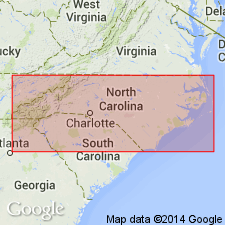
- Usage in publication:
-
- Copperhill Formation
- Modifications:
-
- Overview
- AAPG geologic province:
-
- Piedmont-Blue Ridge province
Summary:
Correlation chart (fig. 2) shows the following relations. The Great Smoky Group in western NC consists of five formations (ascending): Thunderhead, Anakeesta, Grassy Branch (new name), Ammons (new name), and Dean Formations (chart implies that Dean and top of Ammons are time equivalent). Grassy Branch Formation is applied to unnamed beds mapped by King and others (1958) above Anakeesta Formation. In relation to Great Smoky Group mapped by Hurst (1955) in Mineral Bluff quad, GA, Anakeesta correlates with Copperhill Formation, Grassy Branch correlates with Hughes Gap Formation, and Ammons correlates with Hothouse and Dean Formations.
Source: GNU records (USGS DDS-6; Reston GNULEX).
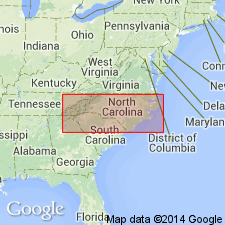
- Usage in publication:
-
- Copperhill Formation
- Modifications:
-
- Overview
- AAPG geologic province:
-
- Piedmont-Blue Ridge province
Summary:
Copperhill Formation of Great Smoky Group of Ocoee Supergroup is mapped in Blue Ridge belt in western NC. An unnamed slate within Copperhill is separately mapped. Age is Late Proterozoic.
Source: GNU records (USGS DDS-6; Reston GNULEX).
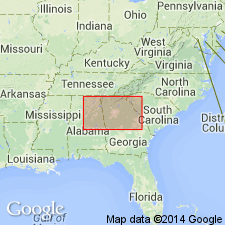
- Usage in publication:
-
- Copperhill Formation*
- Modifications:
-
- Areal extent
- AAPG geologic province:
-
- Appalachian basin
Summary:
The Copperhill Formation of Hurst (1955) of the Great Smoky Group is used in the Bill Arp thrust sheet in northern GA.
Source: GNU records (USGS DDS-6; Reston GNULEX).
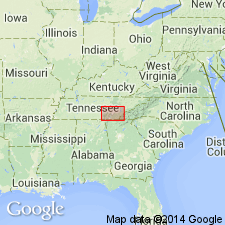
- Usage in publication:
-
- Copperhill Formation*
- Modifications:
-
- Overview
- AAPG geologic province:
-
- Piedmont-Blue Ridge province
- Appalachian basin
Summary:
Copperhill Formation of Great Smoky Group is shown as Late Proterozoic. Underlain by Farner formation (informal unit of Wiener and Merschat, 1978).
Source: GNU records (USGS DDS-6; Reston GNULEX).
For more information, please contact Nancy Stamm, Geologic Names Committee Secretary.
Asterisk (*) indicates published by U.S. Geological Survey authors.
"No current usage" (†) implies that a name has been abandoned or has fallen into disuse. Former usage and, if known, replacement name given in parentheses ( ).
Slash (/) indicates name conflicts with nomenclatural guidelines (CSN, 1933; ACSN, 1961, 1970; NACSN, 1983, 2005, 2021). May be explained within brackets ([ ]).

